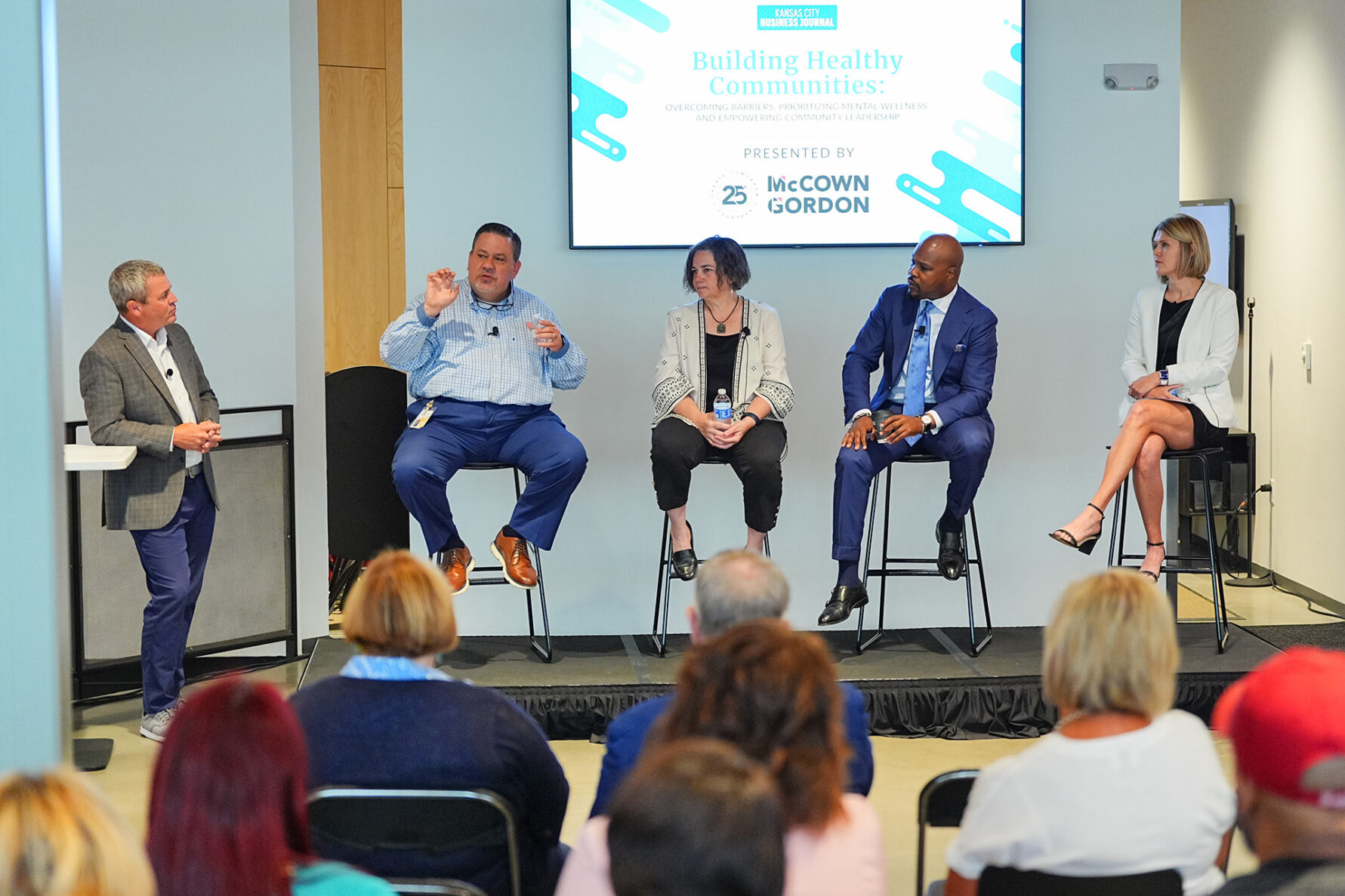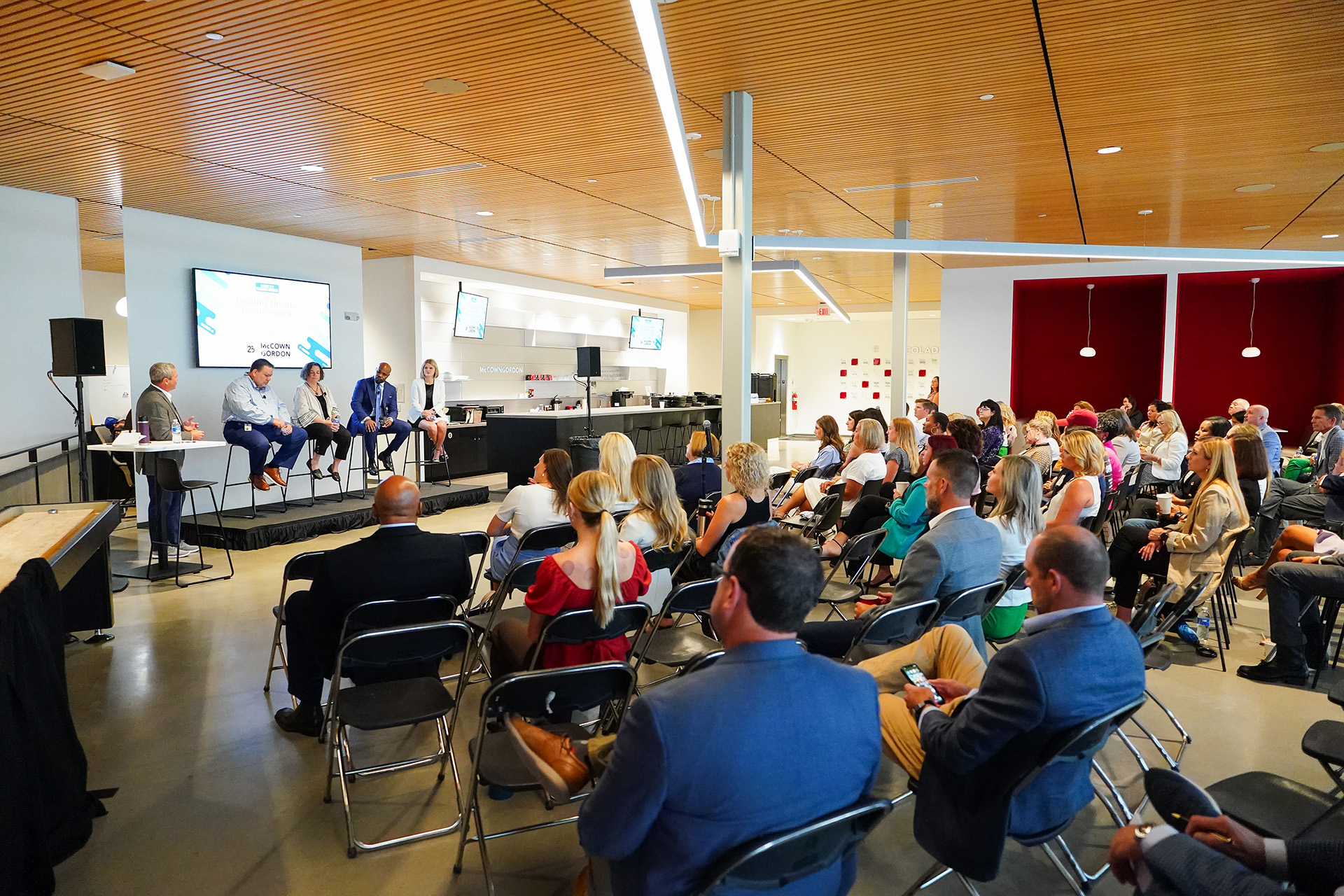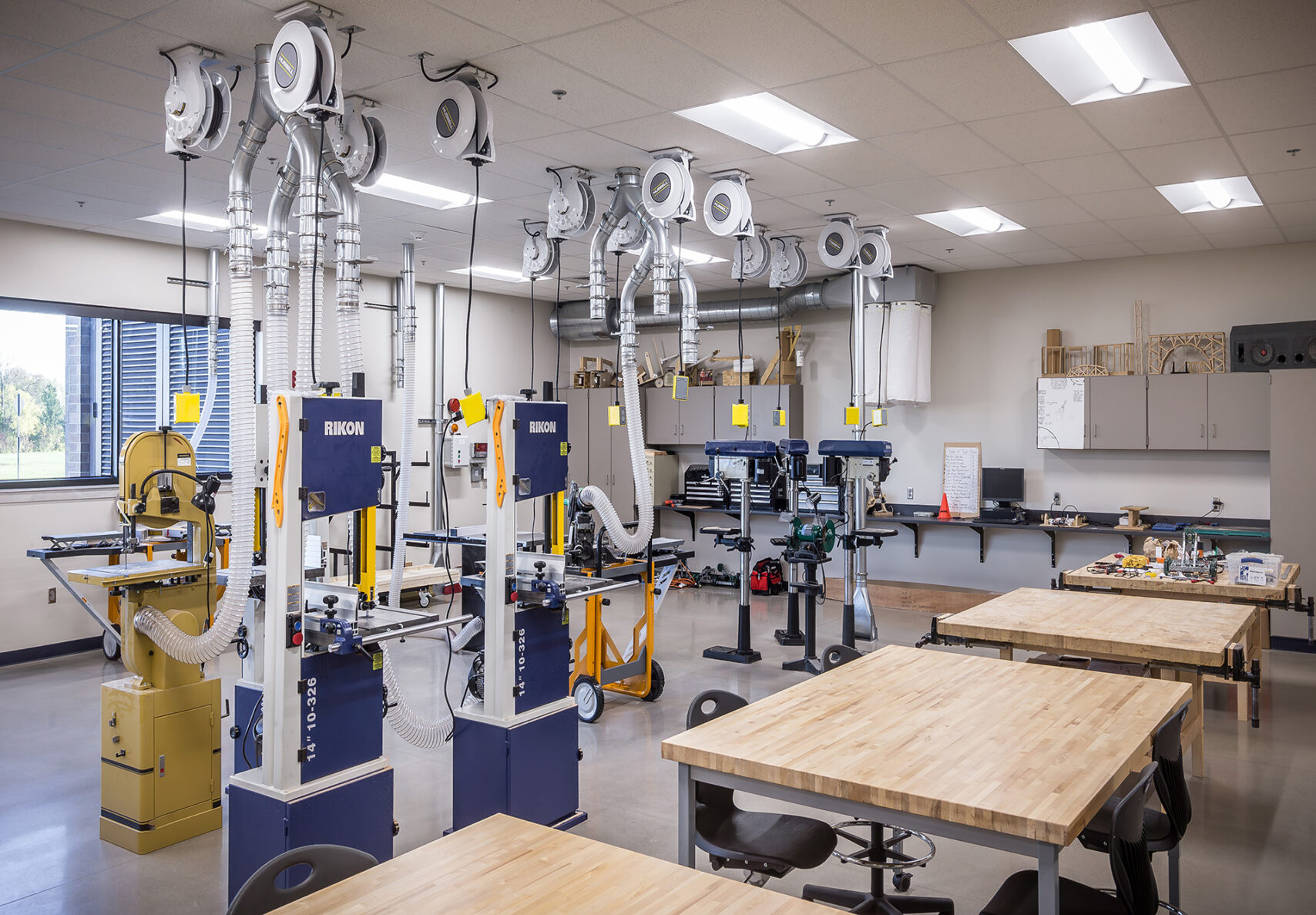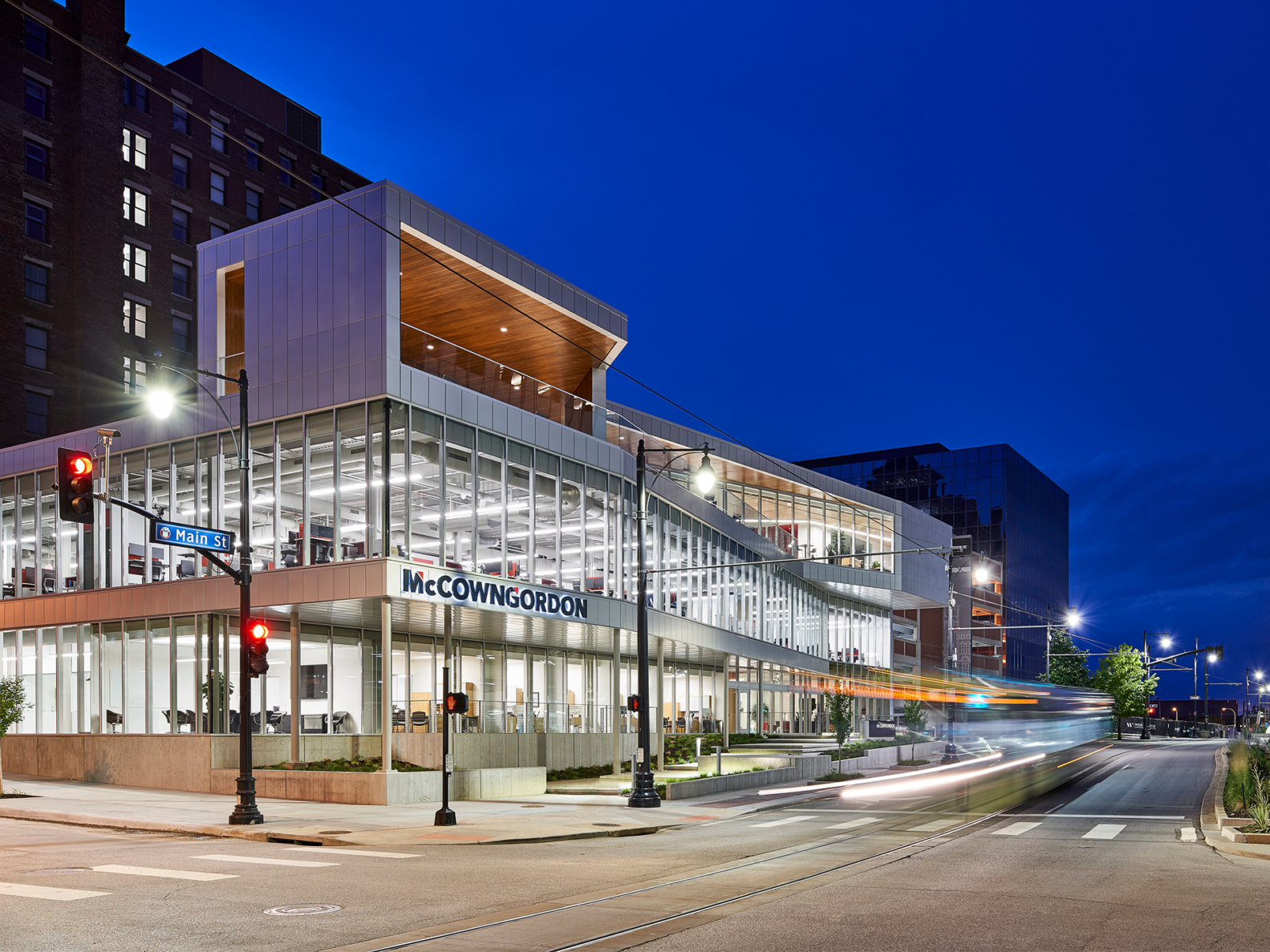Top Takeaways from KCBJ Panel Session: Building Healthy Communities
Overcoming Barriers, Prioritizing Mental Wellness, and Empowering Community Leadership

Thriving communities depend on the well-being of their residents. But what if access to quality healthcare, or even basic mental health support, feels out of reach? A team of community health experts tackled the conversation surrounding these barriers head-on. Chris Vaeth, senior vice president and regional leader of McCownGordon, led the conversation with enlightening takeaways.
Mental Health:
Within the past decade, drastic shifts have changed how our society views community health and more specifically, mental health. However, what is often viewed as a standalone issue, the panelists argued is more complex.
“You can’t talk about mental health without talking about physical health and full body health,” said Tim DeWesse, director of Johnson County Mental Health Center. It is common to treat physical health and mental health separately. However, DeWesse argues the key to overall wellness is to bring back the connection of the brain and body in treatment methods. The pandemic shifted society’s perception of mental health. This opened doors for further discussions, including the shift to a holistic mental health approach geared away from prevention and treatment to overall wellness.
To address a rise of mental health issues near the end of the 2010s, the leaders in Johnson County allowed local students to inform the community leaders of what they saw as the issues. The collaboration between the school districts, corporate partners and mental health centers allowed the county to build a healthier community and lower mental health issues in teens. To continue the upward movement, the county implemented a program which sends mental health professionals with the emergency responders to situations allowing mental health services to be provided when they are needed most.
Dr. Michelle Chavey, president of Hollis + Miller, a K-12 dedicated architecture firm, noted that many of today’s schools are designed to include mental and physical health spaces. According to Chavey, the community’s perspective within the last decade has moved away from educating children on math and science towards providing physical and mental healthcare to children who don’t have access to it regularly. Ongoing efforts to raise awareness and improve access to health services make it easier to address these issues.
A critical factor in treating mental health is to meet the needs of the individual. “People don’t wake up and have mental health issues. The environments they live in have caused trauma for years,” Jeron Ravin, president and CEO of Swope Health stated. “If we can fix those environments, we can minimize the number of people that are affected by those environments,” he continued. University Health used this method during the pandemic. “We stepped out of our four walls and stepped into the community. It was a critical time to take care and educate the community by meeting people where they were,” said Jolie Justus, chief legal officer and general counsel at University Health.
Stigma Impact:
How have the shifts in the perspective of mental health affected accessibility and the types of care provided? DeWesse explained, “we understand how to provide good healthcare, both mental and physical, but there are other things in people’s lives that impact them—affordable housing, homelessness and gun violence.” These factors impact a person’s wellbeing and DeWesse emphasized the community and leaders must openly discuss and address the systemic impacts. Every panelist agreed community changes are necessary and highlighted access, equality, housing and transportation as key systemic issues. Justus noted the lengthy wait times for government-provided healthcare can seem insurmountable, leading many individuals to forgo seeking treatment. Many times, for an individual to receive treatment, it comes down to resources and equity. Ravin pointed out the community lacks equality and highlighted the need for significant investments in historically underserved areas. Such investments should include resources such as healthy grocery stores, green spaces, and adequate lighting, which have been proven to reduce crime.
University Health and Swope Health prioritize addressing basic needs before providing treatment. At University Health, Justus explained their “housing first” philosophy which ensures patients have stable housing and transportation while receiving treatment. Swope Health has built an environment “where individuals don’t feel stigmatized as they walk in the door to receive mental health treatment,” Ravin said. He continued, “the building shouldn’t look like an institution, but instead, it should look like you’re walking into your living room where you feel at home and comfortable.” Swope Health is expanding their treatment capabilities and increasing jobs in the mental health field with a new facility set to open in 2026.
From a community perspective, how should we address these systemic issues? According to Ravin, addressing systemic issues in the healthcare industry requires strong leadership. Community leaders must develop a strategic plan to address these challenges and commit to implementing it over the long term. Across the state line in Johnson County, Kansas, the local government and their role in this topic has evolved within the past decade. Many elected officials in the county understand the systemic problems according to DeWesse. “Helping someone manage the symptoms of schizophrenia is important, but to walk out of the facility and die of a heart attack because their chronic care condition wasn’t addressed is absurd,” said DeWesse. Johnson County is planning to bring together the ability to treat both physical and mental health in the same facility with the new Health Services Building in Olathe, Kansas.
Vulnerable Populations:
How should community and civic leaders support vulnerable populations? Panelists agreed collaboration is key. Justus emphasized that each organization represented in the discussion excels in different areas of community health. She suggested organizations should support each other to maximize effectiveness and better serve the local community. DeWesse recommended using funding sources more efficiently, allowing data to drive decisions and achieve better outcomes. Ravin expanded on this idea by suggesting healthcare companies serving vulnerable populations should be compensated based on outcomes they achieve in people’s lives, rather than the services provided. He suggested each organization evaluate: “Have you done a fantastic job of changing the trajectory of this person’s health and wellbeing?”
The panelists then went into detail regarding one of the most vulnerable populations in our society, children. The education system is shifting to provide avenues for kids to discuss mental health. According to Chavey, children have revealed the need for stress management and mental health spaces in K-12 facilities. “These spaces are essential for learning.” Chavey noted. “The cause of stress for a child may have started at home, and they can’t learn without resetting their body and brain.”
We have started seeing improvements throughout the community, and Chavey noted that some educational systems are integrating education with full body healthcare. Some school districts have implemented unique spaces such as dental clinics, which help both children, parents and caregivers. Additionally, large, multi-functional spaces are being used to conduct nutrition classes to allow hands-on learning experiences. However, Chavey noted, the implementation of these spaces is lacking due to slow collaboration, which is key to supporting vulnerable populations.
Workforce:
When discussing workforce, everyone agreed that a shortage of personnel is placing a strain on our community’s health. But what caused the lack of workforce? Ravin argues the change in perception of the workforce combined with a shortage of skilled individuals to replace those who are leaving, is causing the shortage. Many of the panelists identified that educating younger generations about real-life scenarios in various professions could help tackle this issue.
Justus explained University Health’s Career Connections program, which engages students in educational environments to explain healthcare professions and provide real-life examples of how science is applied. Additionally, they offer externships for educators to gain insight into healthcare industry jobs, enabling them to better guide students. Similarly, educational facilities are starting to incorporate spaces that stimulate real-life, professional environments. However, as Chavey noted, these spaces are costly to design and construct, leading many districts to carefully evaluate the investment.
Trends:
Finally, the panel discussed the positive trends and innovations expected to impact the next five to ten years. Within the K-12 space, Chavey noted that conversations about expanding educational and mental health programs are influencing the design and construction of facilities. She emphasized that early engagement is key. Similarly in the healthcare industry, Ravin said more collaboration is happening, and corporate and social responsibility is at a height. Additionally, Justus and DeWesse discussed the positive impacts of new technology, such as AI, allowing healthcare professionals to spend more time with patients and provide better services.
In closing, a question was raised about how the public can support the work of community health experts. Justus suggested advocating for improved transportation and mobility as a key area of support.





